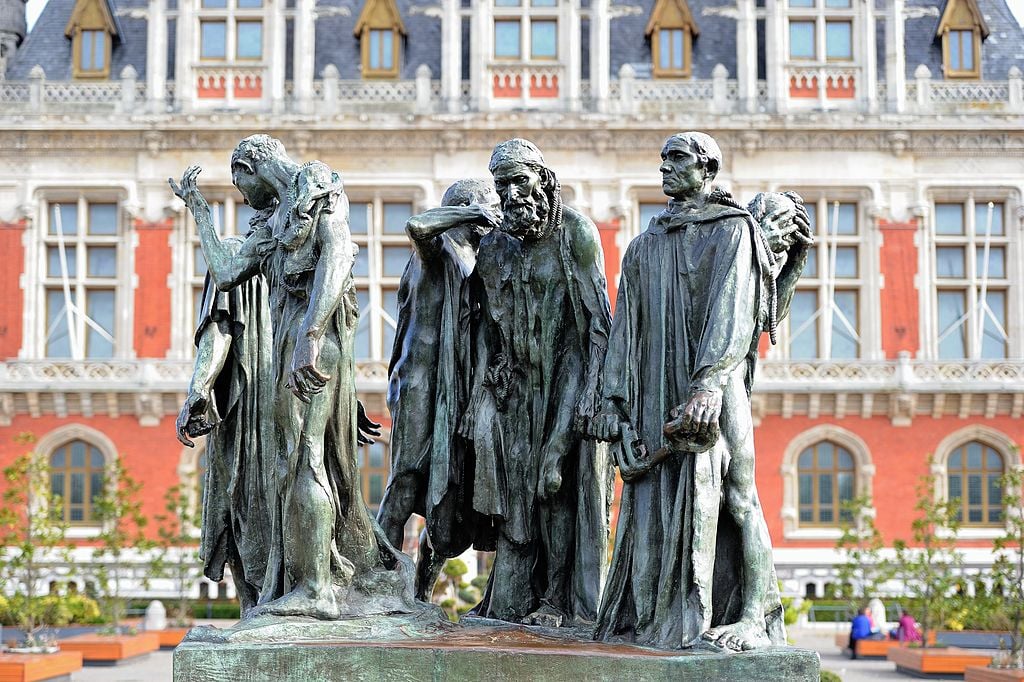
A plaster version of the $3.7 million sculpture Les Bourgeois de Calais, one of many castings made by Auguste Rodin, has been missing from the Glasgow Museums collection for nearly 75 years.
Rodin was allowed under French law to cast multiple versions of the sculpture, commissioned by the city of Calais in 1884. A number of castings in bronze stand at museums across the world.
Glasgow Life, the charity that oversees the city’s museums, confirmed over email that the statue was missing. The city’s museums include the Riverside Museum, The Burrell Collection, GoMA, the People’s Palace, and Kelvingrove Park—where the sculpture was last exhibited in 1949.
That exhibition, “Sculpture in the Open Air,” ran from June 25 to September 30, 1949, a spokesperson for Glasgow Life said in an email. The spokesperson confirmed that authorities lost track of the sculpture after that exhibition.
Another sculpture by Rodin that had been exhibited, Saint jean de Baptiste, remains in storage at Glasgow Museums Resource Center.
“Les Bourgeois de Calais suffered damage while on display in this exhibition and at present is unlocated,” the spokesperson said.
Director Jérôme le Blay told the French newswire AFP that the value of the work is estimated around $3.7 million.
Glasgow Museums was founded in the 1860s and acquired the sculpture in 1901. However, as reported by the BBC, it is one of among 1,750 items currently listed as missing or stolen.
The Glasgow Life spokesperson said the process of recording, cataloguing, and caring for the collection “has improved significantly” since Glasgow Museums was founded.
“For 30 years, the cataloguing of the collection has been increasingly centralized using the Museum’s Collection Management System,” the spokesperson said, adding that the storage of the collection has also been improved through capital improvement projects in Glasgow in the past two decades.
Glasgow Museums has spent the past 20 years conducting an inventory of the items in the collection, and, based on these processes, finding objects which had previously been recorded as “unlocated,” according to the spokesperson.
“This process has enhanced security of the collections, preventing theft from storage in the last 20 years, and reduced the number of objects recorded as unlocated, even temporarily,” the spokesperson said.
“Where historic thefts have been conclusively identified, we have robust processes in place including notifying the police and adding the items to the Art Loss register which makes it difficult to secure sales at legitimate auctions.” Art Loss is a private registry for missing artifacts seeking to aid in their recovery.
The revelation comes as museums take account of their collections in the wake of a scandal at the British Museum, where a senior curator was alleged to have stolen more than 2,000 objects from its collection over the course of years.
More Trending Stories:
Four ‘Excellently Preserved’ Ancient Roman Swords Have Been Found in the Judean Desert